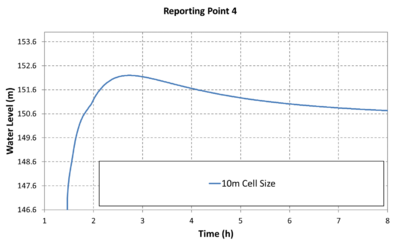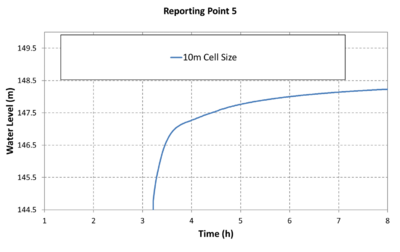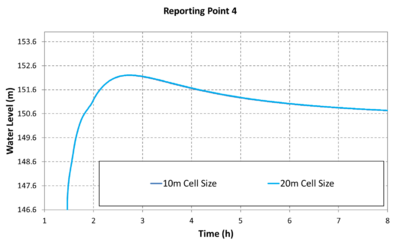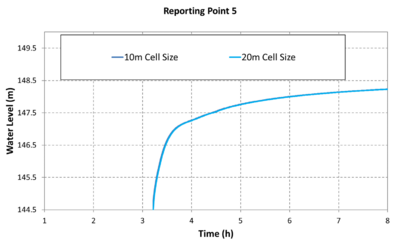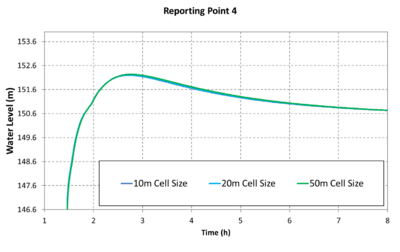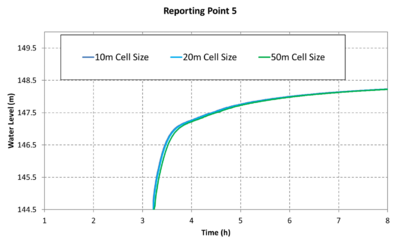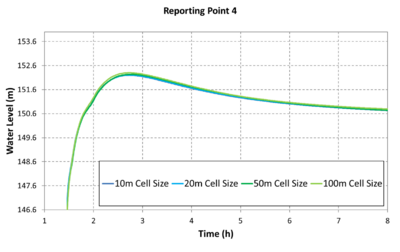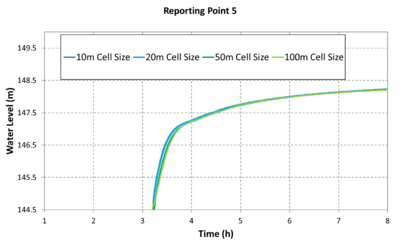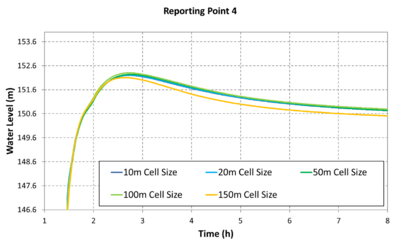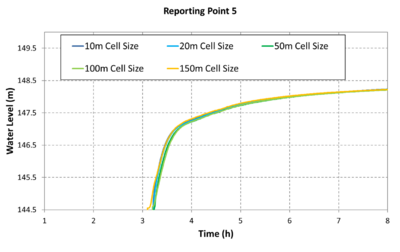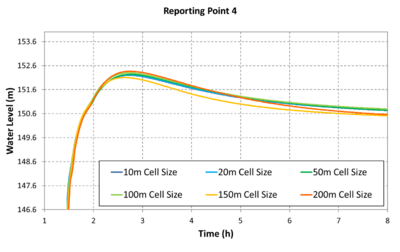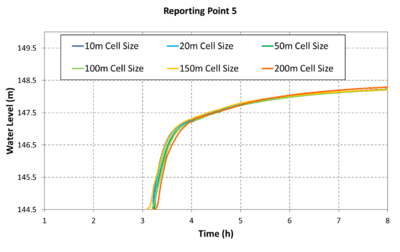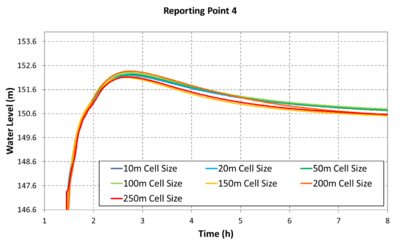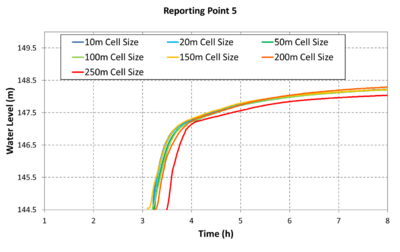Difference between revisions of "TUFLOW 2D Cell Size Selection"
Jump to navigation
Jump to search
Chris Huxley (talk | contribs) |
Chris Huxley (talk | contribs) |
||
| Line 6: | Line 6: | ||
This test is designed to simulate flood wave propagation down a river valley following the failure of a dam. The valley DEM is ~0.8 km by ~17 km and the valley slopes downstream on a slope of ~0.01 in its upper region, easing to ~0.001 at lower elevations. <br> | This test is designed to simulate flood wave propagation down a river valley following the failure of a dam. The valley DEM is ~0.8 km by ~17 km and the valley slopes downstream on a slope of ~0.01 in its upper region, easing to ~0.001 at lower elevations. <br> | ||
[[Mesh_Converge_Model_Description_001.png|400px]]<br> | [[Mesh_Converge_Model_Description_001.png|400px]]<br> | ||
| − | [[File:Mesh_Converge_Model_Elevation_001.png| | + | [[File:Mesh_Converge_Model_Elevation_001.png|500px]]<br> |
The inflow hydrograph shown below is applied as a boundary condition at the upstream end of the valley. <br> | The inflow hydrograph shown below is applied as a boundary condition at the upstream end of the valley. <br> | ||
| − | [[File:Mesh Converge Model Inflow 001.png| | + | [[File:Mesh Converge Model Inflow 001.png|500px]]<br> |
Revision as of 12:38, 24 May 2018
This page is currently under construction.
Cell size convergence is an important concept in flood modelling.
This test is designed to simulate flood wave propagation down a river valley following the failure of a dam. The valley DEM is ~0.8 km by ~17 km and the valley slopes downstream on a slope of ~0.01 in its upper region, easing to ~0.001 at lower elevations.
400px

The inflow hydrograph shown below is applied as a boundary condition at the upstream end of the valley.

